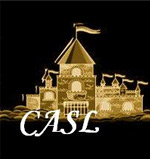Keeneland: Bringing heterogeneous GPU computing to the computational science community
J.S. Vetter, R. Glassbrook, J. Dongarra, K. Schwan, B. Loftis, S. McNally, J. Meredith, J. Rogers, P. Roth, K. Spafford, and S. Yalamanchili. “Keeneland: Bringing heterogeneous GPU computing to the computational science community.” IEEE Computing in Science and Engineering, 13(5):90-5. 2011.
Abstract
Keeneland is organized into two primary deployment phases. The first phase provides a moderately sized, initial delivery system (KID) to develop software tools for GPU computing and to prepare applications to exploit GPUs effectively. During 2012, Keeneland’s second phase will provide a full-scale system for production use by computational scientists. The Keeneland Full Scale (KFS) system will be similar to the KID system in terms of hardware and software-that is, it will be a Linux cluster based on commodity next-generation CPUs, next-generation GPUs, HPC interconnect, programming environment, and tools. The KFS system is expected to have at least two times KID’s total number of GPUs, with the expected performance improvements of the next-generation CPUs and GPUs. KFS will be an Extreme Digital Science and Engineering Discovery Environment (XSEDE) resource available to a broad set of users. Although there’s currently a community movement in HPC toward this type of architecture, a critical component of the Keeneland project is to develop software that will let users take advantage of its unique capabilities. We also aim to reach out to teams developing applications that might map well to this innovative architecture.
Download
Keeneland: Bringing heterogeneous GPU computing to the computational science community [PDF]
Citation
author={Vetter, J.S. and Glassbrook, R. and Dongarra, J. and Schwan, K. and Loftis, B. and McNally, S. and Meredith, J. and Rogers, J. and Roth, P. and Spafford, K. and Yalamanchili, S.},
journal={Computing in Science Engineering},
title={Keeneland: Bringing Heterogeneous GPU Computing to the Computational Science Community},
year={2011},
month={sept.-oct. },
volume={13},
number={5},
pages={90 -95},
}

